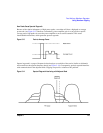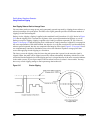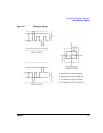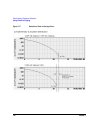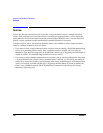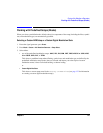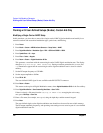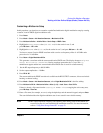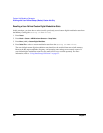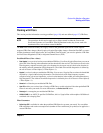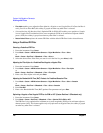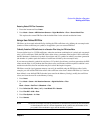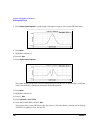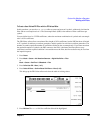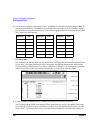
Chapter 6 123
Custom Arb Waveform Generator
Working with User-Defined Setups (Modes)-Custom Arb Only
Customizing a Multicarrier Setup
In this procedure, you learn how to customize a predefined multicarrier digital modulation setup by creating
a custom 3-carrier EDGE digital modulation state.
1. Press
Preset.
2. Press
Mode > Custom > Arb Waveform Generator > Multicarrier Off On.
3. Press
Multicarrier Define > Initialize Table > Carrier Setup > EDGE > Done.
4. Highlight the Freq Offset value (500.000 kHz) for the carrier in row 2, and
press
Edit Item > −625 > kHz.
5. Highlight the Power value (0.00 dB) for the carrier in row 2, and press
Edit Item > −10 > dB.
You have a custom 2-carrier EDGE waveform with a carrier at a frequency offset of −625 kHz and a
power level of −10.00 dBm.
6. Press
Return > Digital Modulation Off On.
This generates a waveform with the custom multicarrier EDGE state. The display changes to Dig Mod
Setup: Multicarrier (Modified). During waveform generation, the DIGMOD and I/Q
annunciators appear and the new custom multicarrier EDGE state is stored in volatile memory.
7. Set the RF output frequency to 890.01 MHz.
8. Set the output amplitude to −10 dBm.
9. Press
RF On/Off.
The custom multicarrier EDGE waveform is available at the RF OUTPUT connector; it does not include
bursting or channel coding.
10. Press
Mode > Custom > Arb Waveform Generator, where Digital Modulation Off On is the first softkey.
11. Press
Multicarrier Off On > Multicarrier Define > More (1 of 2) > Load/ Store > Store To File.
If there is already a file name from the Catalog of MDMOD Files occupying the active entry area,
press
Edit Keys > Clear Text.
12. Enter a file name (for example, EDGEM1) using the alpha keys and the numeric keypad, and press
Enter.
The user-defined multicarrier digital modulation state is now stored in non-volatile memory.
NOTE The RF output amplitude, frequency, and operating state settings (such as RF On/Off) are
not stored as part of a user-defined digital modulation state file. For more information,
refer to “Using Data Storage Functions” on page 52.



